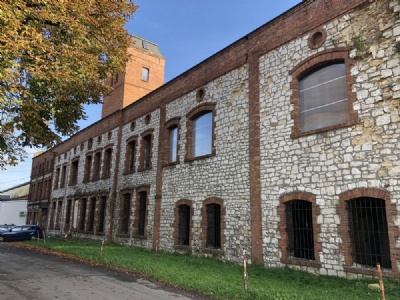Czestochowa – HASAG
In 1863 a company was founded in Leipzig called Hugo Schneider Aktiengesellschaft Metallwarenfabrik (HASAG). Initially it started with a small-scale production of metal products, but during the First World War they began to produce war materials. After the war, the demand for war materials drastically decreased in Germany as a result of the Versailles Treaty. But in the thirties when Germany under the Nazis began to rearm, the demand for war material again increased and the company and signed lucrative contracts with the German armed forces and the SS.
When Germany invaded Poland in September 1939, the demand for war material increased even more and the company expanded in both Germany and occupied Poland. In Poland factories were established in three cities, Czestochowa, Kielce and Skarzysko-Kamienna. HASAG came to use slave workers from both ghettos and concentration camps in occupied Poland. HASAG expanded to become the third largest company to exploit slave workers in its production. The factory in Czestochowa existed between 1942 and 1945 and was mainly used to produce ammunition.
By hiring Jewish prisoners from both ghettos and camps, HASAG was guilty of war crimes for using prisoners as slave labor. The conditions in the factories were substandard and the prisoners suffered severely. The Germans carried out regular selection among the slave workers and the prisoners who could no longer work were at risk of being murdered. in July 1943, 500 Slave workers from HASAG were murdered at Czestochowa’s Jewish Cemetery. As the Soviet Red Army advanced westward in the fall of 1944, the Germans evacuated the factories in Poland and its workers to other factories further awar from the front. In total, the number of slave workers at the three HASAG factories in Poland amounted about 60,000, about half of them died.
Current status: Partly preserved/demolished with monument (2023).
Location: 50°47' 52.72" N 19°07' 07.27" E
Get there: Car.
Follow up in books: Gilberg, Martin: Holocaust: A History of the Jews of Europe During the Second World War (1987).


I guess several factory buildings are gone while others seem to be empty/abandoned. Some seem to be rented out to various companies or private individuals, some buildings seems to be residentials. The premises are located in an industrial area mixed with housing and it looks like a kind of rough area.